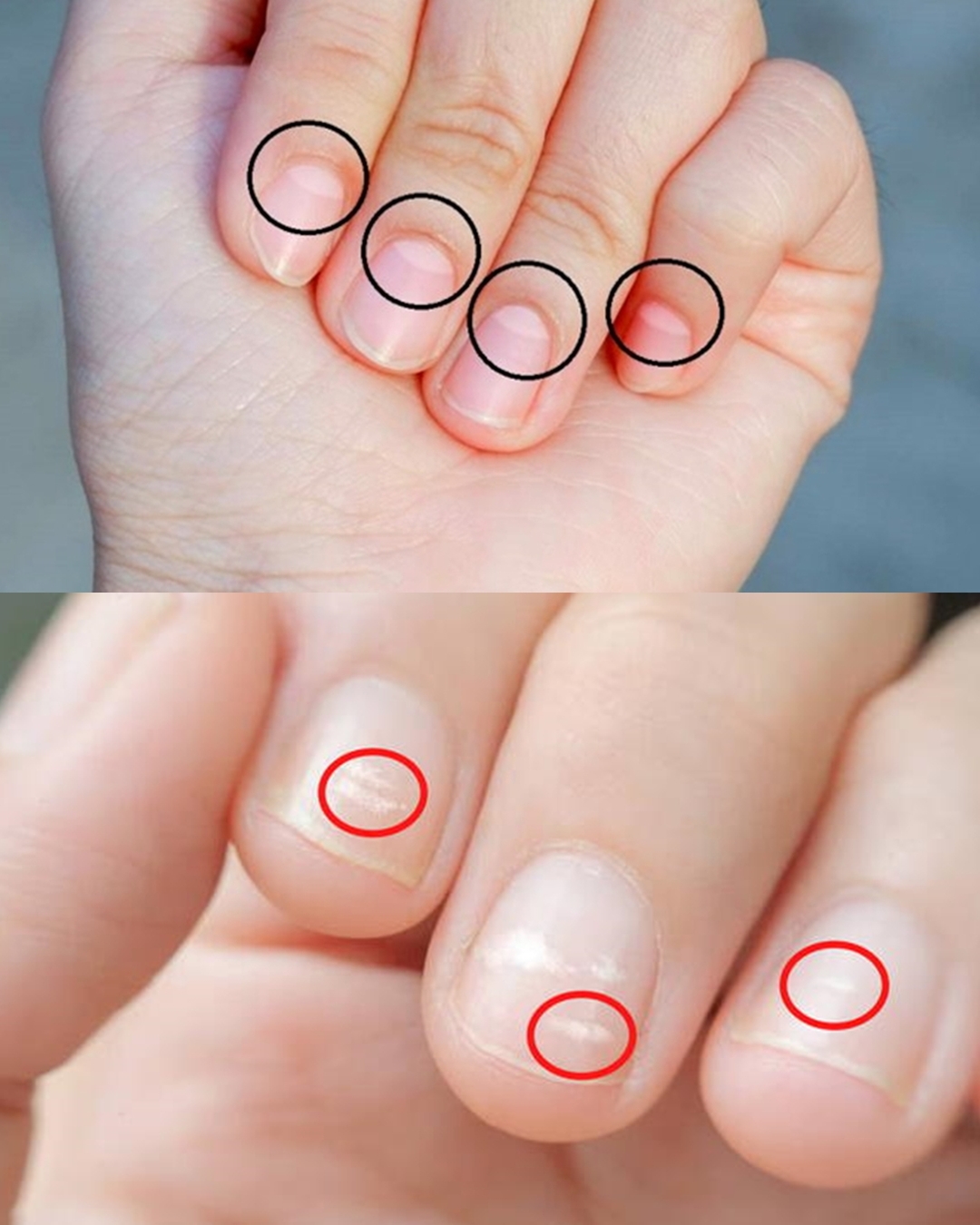ADVERTISEMENT
hy red blood cells to carry oxygen.
3. Discolored Lunulae
The color of your lunulae can offer important clues about your health. A change in color, such as a blue, red, or yellow hue, could indicate underlying health problems. Here’s what you need to look out for:
- Blue or Purple Lunula: A bluish tint to your lunulae could be a sign of poor oxygen circulation in your blood. This could be related to a respiratory issue, such as asthma, chronic obstructive pulmonary disease (COPD), or heart problems.
- Red Lunula: Red or inflamed lunulae could indicate increased blood pressure or inflammation in your body. This could be a sign of an underlying issue, such as infection or autoimmune disease.
- Yellow Lunula: Yellowish moons may signal liver issues or fungal infections in your nails. It’s important to seek medical advice if you notice any changes in color, as liver conditions like hepatitis or cirrhosis can affect nail health.
4. Multiple Lunulae
In rare cases, some people may have more than one visible lunula on a single nail. This could be an indication of genetic variation, but in some instances, it may also signal an underlying systemic health condition. If you notice multiple moons on a nail, it’s worth consulting a doctor for a health assessment.
What Changes in Lunulae Might Mean for Your Health
- Liver Disease: A significant change in the color or size of your lunulae could be indicative of liver dysfunction. For example, a white or pale lunula on all nails may be a sign of liver disease like cirrhosis or hepatitis. Yellowing of the lunulae could point to jaundice, a condition caused by a liver issue.
- Heart Disease: Changes in the appearance of your lunulae, particularly if they turn blue, may signal a lack of oxygenated blood reaching your extremities, which can occur in people with heart disease or respiratory problems.
- Kidney Disease: Some kidney issues may cause the lunulae to become pale or less prominent. This can be related to fluid retention or an imbalance in electrolyte levels.
- Nutritional Deficiencies: If you’re not getting enough essential vitamins or minerals, such as iron or B12, your lunulae may appear less defined or smaller. In such cases, improving your diet or taking supplements may help restore their normal appearance.
- Anemia: A pale lunula can also be a sign of iron-deficiency anemia, which occurs when your body doesn’t have enough healthy red blood cells to carry oxygen.
When Should You Seek Medical Advice?
While small or absent lunulae are not always a cause for concern, it’s important to seek medical attention if you notice any of the following:
- Significant discoloration of the lunulae (e.g., turning blue, red, or yellow).
- Changes in the size or shape of the lunulae that are accompanied by other symptoms like fatigue, shortness of breath, or swelling.
- Pain or swelling around your nails, which could indicate infection or other underlying health conditions.
- For Complete Cooking STEPS Please Head On Over To Next Page Or Open button (>) and don’t forget to SHARE with your Facebook friends
If you’re concerned about the health of your nails or notice any drastic changes in their appearance, it’s always a good idea to consult with a healthcare provider for a proper evaluation.
Conclusion
The crescent moon at the base of your nails, also known as the lunula, can provide fascinating insights into your overall health. While the size and appearance of the lunulae can be largely influenced by genetics, changes in their appearance—such as color, size, or shape—can sometimes serve as warning signs of underlying health issues, ranging from nutritional deficiencies to more serious conditions like liver or heart disease.
Pay attention to the subtle clues your nails are giving you, and if you notice any significant changes, don’t hesitate to consult with a healthcare professional. After all, a healthy body often starts with the small details, and your nails could be one of the first places to reveal the state of your health.
